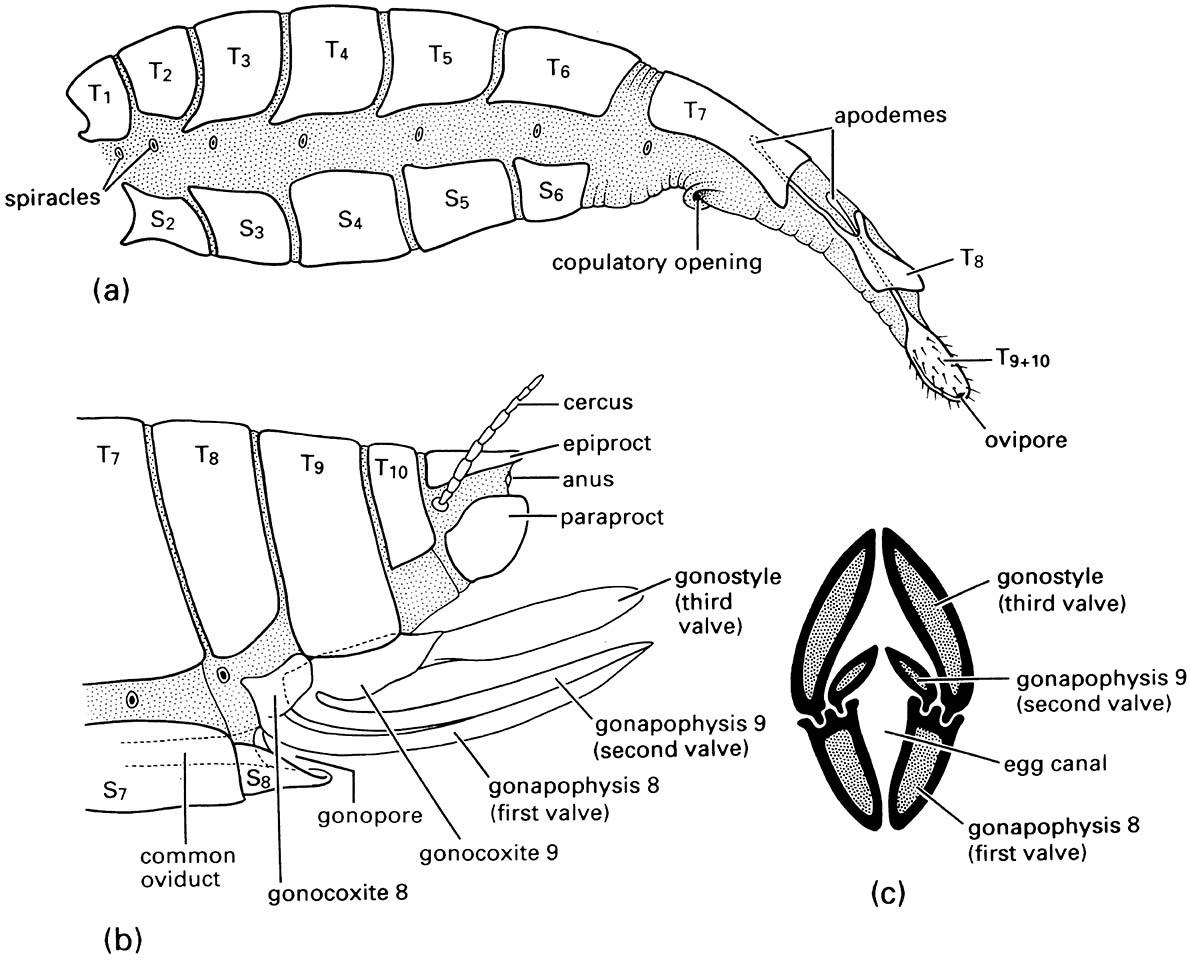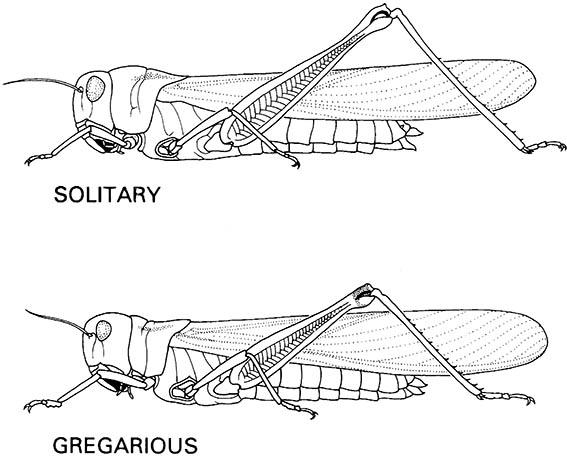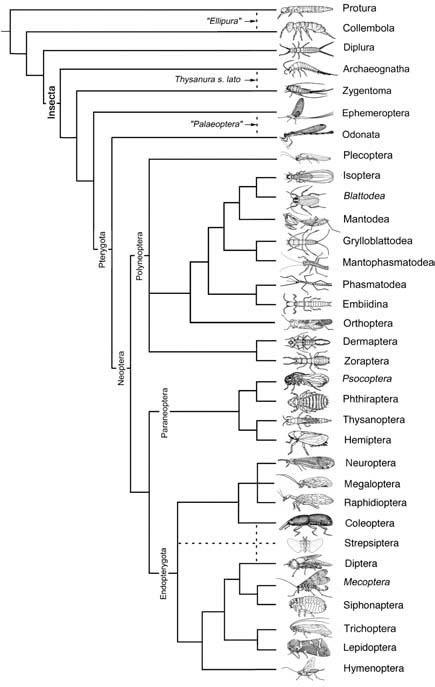Box 11.5. Orthoptera (grasshoppers, locusts, katydids, and crickets)
The Orthoptera is a worldwide order of more than 20,000 species in some 13 to 30 families (the classification is unstable), comprising two suborders: Caelifera (grasshoppers and locusts) and Ensifera (katydids and crickets). Orthopterans have hemimetabolous development, and are typically elongate cylindrical, medium-sized to large (up to 12 cm long), with enlarged hind legs for jumping. They are hypognathous and mandibulate, and have well-developed compound eyes; ocelli may be present or absent. The antennae are multisegmented. The prothorax is large, with a shield-like pronotum curving over the pleura; the mesothorax is small, and the metathorax large. The fore wings form narrow, leathery tegmina; the hind wings are broad, with numerous longitudinal and cross-veins, folded beneath the tegmina by pleating. Aptery and brachyptery are frequent. The legs are often elongate and slender, and the hind legs large, usually saltatorial; the tarsi have 1–4 segments. The abdomen has 8–9 annular visible segments, with two or three terminal segments reduced. Females have a well-developed appendicular ovipositor (Fig. 2.23b,c; Box 5.2). The cerci each consist of a single segment.
Courtship may be elaborate and often involves com- munication by sound production and reception (sections 4.1.3 & 4.1.4). In copulation the male is astride the female, with mating sometimes prolonged for many hours. Ensiferan eggs are laid singly into plants or soil, whereas Caelifera use their ovipositor to bury batches of eggs in soil chambers. Egg diapause is frequent. Nymphs resemble small adults except in the lack of development of wings and genitalia, but apterous adults may be difficult to distinguish from nymphs. In all winged species, nymphal wing pad orientation changes between molts (as illustrated here for a locust); in early instars the wing pad rudiments are laterally positioned with the costal margin ventral, until prior to the penultimate nymphal instar (actually the third last molt) they rotate about their base so that the costal margin is dorsal and the morphological ventral surface is external; the hind wing then overlaps the fore wing (as in the fifth-instar nymph illustrated here). During the molt to the adult, the wings resume their normal position with the costal margin ventral. This wing pad “rotation”, otherwise known only in Odonata, is unique to the Orthoptera amongst the orthopteroid orders.
Caelifera are predominantly day-active, fast-moving, visually acute, terrestrial herbivores, and include some destructive insects such as migratory locusts (section 6.10.5; Fig. 6.13). Ensifera are more often night-active, camouflaged or mimetic, and are predators, omnivores, or phytophages.
Phylogenetic relationships are considered in section 7.4.2 and relationships of the order are depicted in Fig. 7.2.


(a) lateral view of the abdomen of an adult tussock moth (Lepidoptera: Lymantriidae) showing the substitutional ovipositor formed from the extensible terminal segments; (b) lateral view of a generalized orthopteroid ovipositor composed of appendages of segments 8 and 9; (c) transverse section through the ovipositor of a katydid (Orthoptera: Tettigoniidae). T1—T10, terga of first to tenth segments; S2—S8, sterna of second to eighth segments. ((a) After Eidmann 1929; (b) after Snodgrass 1935; (c) after Richards & Davies 1959)

The solitaria adults have a pronounced pronotal crest and the femora are larger relative to the body and wing than in the gregaria adults. Intermediate morphologies occur in the transiens (transient stage) during the transformation from solitaria to gregaria or the reverse.

Broken lines indicate uncertain relationships. Thysanura sensu lato refers to Thysanura in the broad sense. (Data from several sources)



